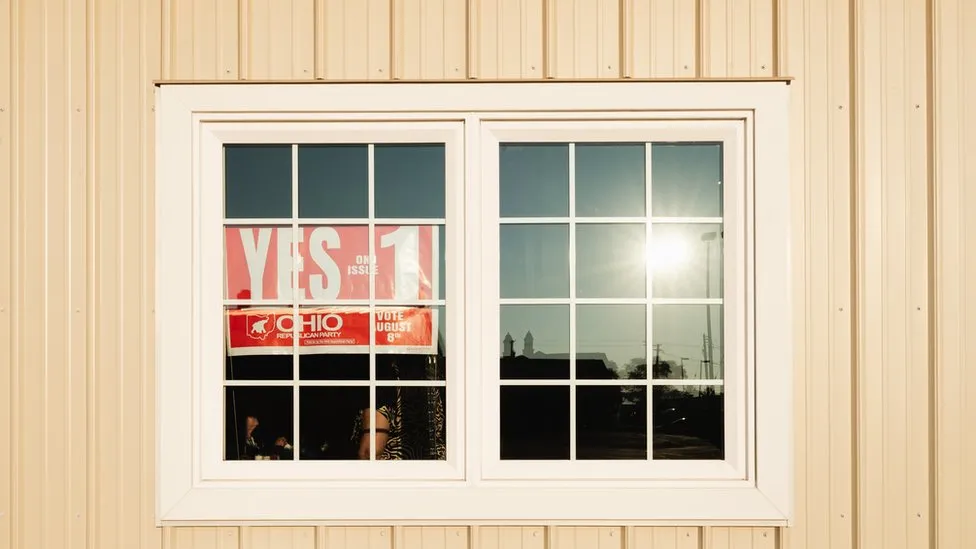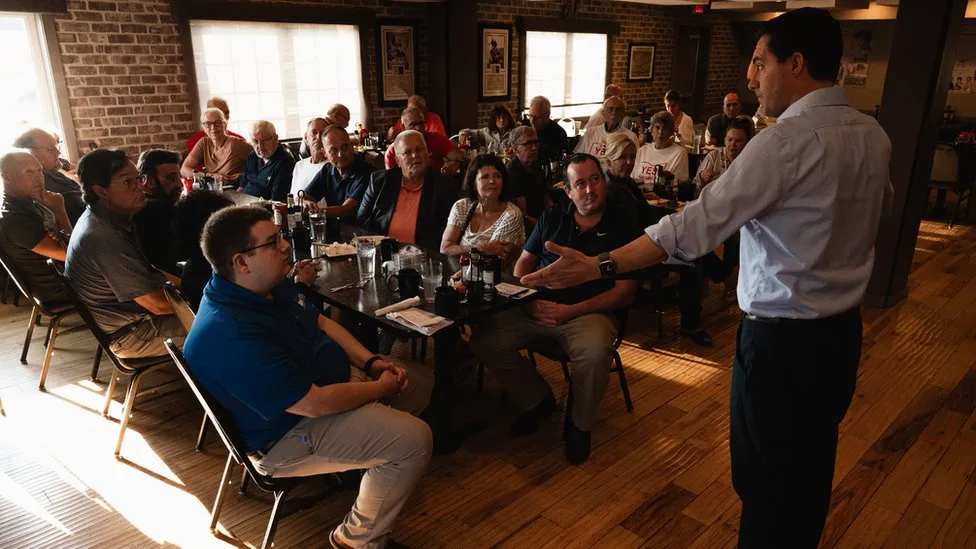Search This Blog
Never ceased updating the lastest new update on lifestyle, freedom, news, finance, music, excussion, politics, metro e.t.c
Featured Post
- Get link
- X
- Other Apps
Issue 1: Ohio vote delivers win for abortion-rights supporters
 |
| Image by: JAKE OLSON/BBC |
In a resounding win for advocates of abortion rights, Ohio residents have united to maintain the minimum voter requirement for amending the state constitution. The move came as voters rejected a proposal to raise the threshold from a simple majority to 60%, marking a triumph for those supporting reproductive rights.
As the vote count surpassed the halfway mark, projections
from US media outlets on Tuesday evening signaled that a majority of Ohioans
had rejected the threshold increase. Notable cities like Cleveland and Columbus
joined the chorus of dissent, with around 43% of voters supporting the proposed
elevation.
One Person One Vote, the campaign behind the 'no' vote,
conveyed in a statement to Politico that the proposed amendment, known as Issue
1, amounted to a "deceptive power play aimed at stifling" the voices of
the electorate.
Liz Walters, Chair of the Ohio Democratic Party, lauded the
result in an interview with the Columbus Dispatch, highlighting that the
outcome reflected the vision for the state's future.
This year's August election, though seemingly mundane,
carried significant implications. The high turnout, surpassing 600,000 early
ballots, is unprecedented for summer elections in Ohio. The vote on Issue 1,
despite its seeming technicality, bore weight on an upcoming decision scheduled
for November—an issue that could establish a statewide right to abortion.
Had Issue 1 passed, it would have likely hindered the
progress of the abortion-rights amendment, as it would have fallen short of the
newly proposed threshold.
Amid the debate surrounding Issue 1, the question lingered:
Was this vote about safeguarding constitutional integrity, as its proponents
argued, or did it fundamentally revolve around the issue of abortion?
Issue 1:
Issue 1 emerged as the sole query on Ohio's August 8 special election ballot. Its passage would have shifted the amendment approval threshold from 50% to 60%. Additionally, Issue 1 would have heightened the challenges of presenting amendments to the electorate, demanding signatures from 5% of eligible voters in each of Ohio's 88 counties, as opposed to the existing requirement of 44.
Over the course of 111 years since Ohio initially granted
voters the ability to introduce citizen-initiated amendments, only 19 out of 71
proposed measures have managed to surpass the 50% threshold.
The Source of Controversy:
Issue 1 had been championed by Ohio's Republican-led legislature and the state's chief election official, Frank LaRose, a Republican serving as secretary of state.
Proponents of the measure, including LaRose, argued that Issue 1 aimed to shield the Ohio constitution from external influences driven by monetary interests. LaRose emphasized that constitutions are meant to uphold fundamental rights and widely accepted beliefs, rather than serve as platforms for contentious matters with only marginal majority support.
However, an assorted and bipartisan coalition of opponents viewed Issue 1 differently. They contended that the measure was a deliberate attempt to thwart the progress of the abortion amendment. Kellie Copeland, executive director of Pro-Choice Ohio, pointed out that surveys in Ohio indicated that nearly 58% to 59% of residents supported the amendment, making it a calculated move to place it out of reach.
A video recording from a private event in May captured
LaRose's apparent confirmation of these suspicions. "I'm pro-life. I think
many of you are as well," LaRose stated. "This is 100% about keeping
a radical pro-abortion amendment out of our constitution."

Mr. LaRose speaks to Republican voters ahead of the Issue 1 election. Imageby: JAKE OLSON/BBC
Foreseeable Ramifications:
Polls indicated that the abortion-rights amendment, safeguarding access to abortion up to fetal viability (approximately 24 weeks of pregnancy), would likely garner majority support. However, crossing the 60% threshold posed a significant challenge.
In the absence of constitutional protection, the Republican-led state legislature was poised to advance further anti-abortion legislation. Presently, a six-week ban was temporarily on hold due to an ongoing legal dispute.
Should abortion become illegal in Ohio, the repercussions would reverberate across neighboring states like Indiana, Kentucky, and West Virginia, where abortion access has already been curtailed.
Beyond the realm of abortion, observers speculated that the
ramifications of Ohio's August election could extend into the state's upcoming
US Senatorial race next year, potentially involving Frank LaRose as a
candidate.
- Get link
- X
- Other Apps
Popular Posts
FOX NEWS: Toddler admitted into American Mensa has an IQ of 146, makes history as youngest member
- Get link
- X
- Other Apps
FOX NEWS: Crossword Puzzle of the Week: September 8
- Get link
- X
- Other Apps
Comments